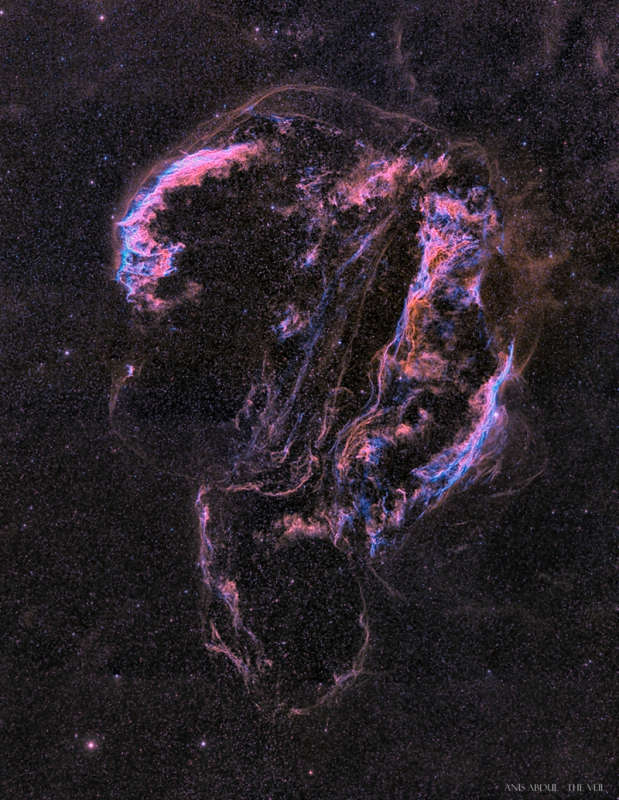
|
Credit & Copyright: Anis Abdul
Explanation:
A ghostly visage
on a cosmic scale, these remains of shocked, glowing gas haunt
planet Earth's sky toward the constellation of Cygnus
and form the
Veil Nebula.
The nebula itself is a large
supernova remnant, an expanding
cloud born of the death explosion of a massive star.
Light from the original supernova explosion likely reached
Earth over 5,000 years ago.
Also known as the Cygnus Loop, the
Veil Nebula now spans
nearly 3 degrees or about 6 times the diameter of
the full Moon.
That translates to over 70 light-years
at its estimated distance of 1,500 light-years.
In fact, the Veil is so large its brighter parts are
recognized as separate nebulae, including The
Witch's Broom (NGC 6960) below and right
of center.
At the top left you can find the Spectre of
IC 1340.
Happy
Halloween!
|
January February March April May June July August September October November December |
| ||||||||||||||||||||||||||||||||||||||||||||||||
NASA Web Site Statements, Warnings, and Disclaimers
NASA Official: Jay Norris. Specific rights apply.
A service of: LHEA at NASA / GSFC
& Michigan Tech. U.
Based on Astronomy Picture
Of the Day
Publications with keywords: Veil Nebula - supernova remnant
Publications with words: Veil Nebula - supernova remnant
See also:
- APOD: 2025 October 1 Á NGC 6960: The Witchs Broom Nebula
- APOD: 2025 June 9 Á Between Scylla and Charybdis: A Double Cosmic Discovery
- APOD: 2025 June 2 Á Veil Nebula: Wisps of an Ancient Supernova
- Supernova Remnant Cassiopeia A
- APOD: 2025 January 8 Á Supernova Remnants Big and Small
- APOD: 2024 September 18 Á The Mermaid Nebula Supernova Remnant
- APOD: 2024 September 4 Á NGC 6995: The Bat Nebula
